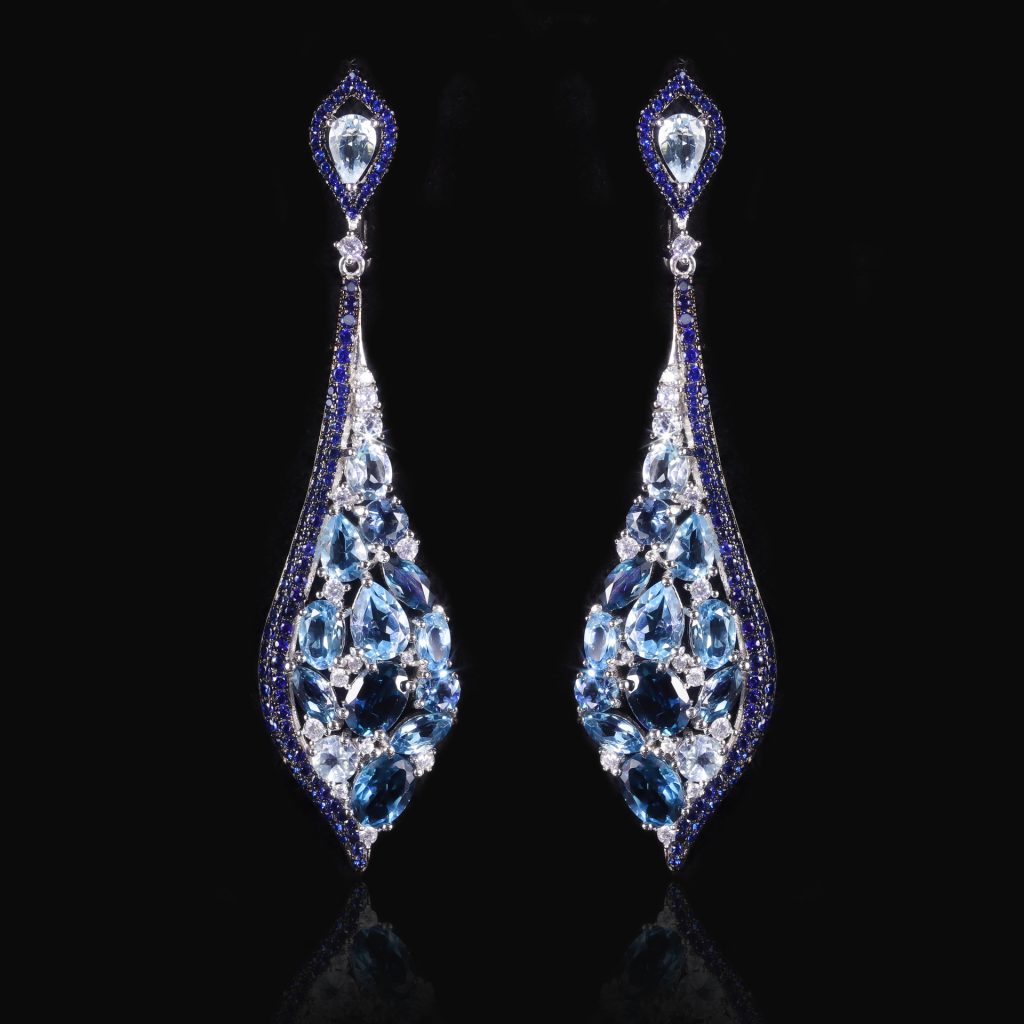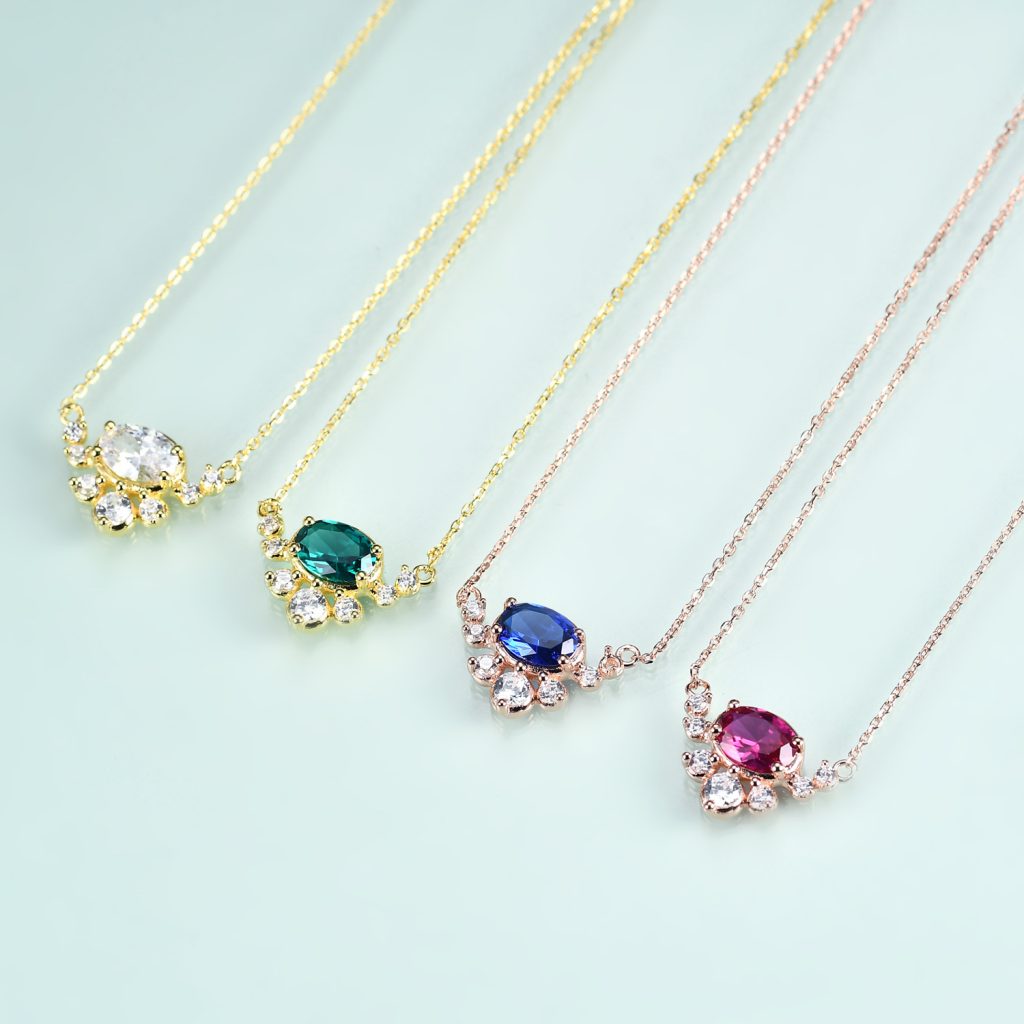When it comes to purchasing gemstone jewelry, one of the most important factors influencing both its quality and value is how the gemstone is graded. Gemstone grading helps determine the overall quality of a stone, which, in turn, affects its price, rarity, and desirability. Whether you’re looking to buy an engagement ring, a luxury pendant, or simply a beautiful piece of gemstone jewelry, understanding gemstone grading is crucial.
In this article, we’ll break down the essential elements of gemstone grading, including how it works, what factors are involved, and why it matters when you’re shopping for gemstones.

What Is Gemstone Grading?
Gemstone grading is the process of evaluating a gemstone’s overall quality based on a set of standardized criteria. These criteria assess the gemstone’s appearance, durability, and rarity, helping consumers and jewelers determine its market value. While there are different grading systems for various types of gemstones, the key factors generally include:
- Color
- Clarity
- Cut
- Carat Weight
Some gemstones, like diamonds, also include a Certification of authenticity, but for most gemstones, these four Cs are the primary determining factors.
The Four Cs of Gemstone Grading
While the 4 Cs—Color, Clarity, Cut, and Carat Weight—are most commonly associated with diamonds, they also apply to a broad range of gemstones. Each of these aspects plays a significant role in determining a gemstone’s overall value.
1. Color
Color is often the most crucial factor in gemstone grading. It encompasses three main attributes:
- Hue: The basic color of the gemstone (e.g., red for ruby, blue for sapphire, or green for emerald).
- Tone: The lightness or darkness of the color, ranging from light to dark.
- Saturation: The intensity or purity of the color, which is highly valued. Gemstones with higher saturation are more prized.
What to Look for in Gemstone Color:
- Vivid Color: The best gemstones display a vibrant, pure color that is not too light or too dark.
- Consistency: A uniform color throughout the gemstone is typically more valuable than one with color zoning or uneven patches.
- Rarity of Color: Certain colors are rarer than others (e.g., Padparadscha sapphires, Paraiba tourmalines), which makes them more expensive.
Examples:
- Rubies with a rich, red hue and minimal orange or brown undertones are the most valuable.
- Emeralds with a deep, lush green and minimal inclusions are highly prized.
- Sapphires with a vibrant blue and no noticeable green or grayish overtones are considered the highest quality.
2. Clarity
Clarity refers to the absence of internal or external imperfections, known as inclusions (inside the gemstone) and blemishes (on the surface of the gemstone). While all gemstones naturally have some form of inclusion or imperfection, stones with fewer or less visible inclusions are generally more valuable.
Clarity Grading Scale:
Clarity can be graded on a scale that ranges from Flawless (FL) to Included (I), where:
- Flawless (FL): No internal or external flaws visible under 10x magnification.
- Internally Flawless (IF): No internal flaws, but there may be minor surface imperfections.
- Very, Very Slightly Included (VVS1/VVS2): Inclusions are very difficult to detect even under magnification.
- Very Slightly Included (VS1/VS2): Inclusions are minor and noticeable under magnification but not visible to the naked eye.
- Slightly Included (SI1/SI2): Inclusions are visible to the naked eye.
- Included (I1/I2/I3): Inclusions are easily visible and can affect the stone’s transparency and overall beauty.
What to Look for in Clarity:
- Minimal Inclusions: The fewer the inclusions, the more valuable the gemstone. However, some gemstones (like emeralds) are known for having natural inclusions that do not necessarily diminish their value.
- Visible Imperfections: Stones with noticeable inclusions that affect transparency, brightness, or appearance are considered less valuable.
Examples:
- Diamonds are graded on a stricter clarity scale because of their higher demand, but for emeralds and rubies, minor inclusions don’t always lower the value as much. For emeralds, inclusions are almost expected.
3. Cut
The cut of a gemstone refers to how well it has been shaped and faceted by the jeweler, and it plays a major role in how light interacts with the stone. The cut affects the brilliance, sparkle, and overall visual appeal of the gemstone.
Factors Affecting Gemstone Cut:
- Symmetry: Well-cut gemstones will have symmetrical facets that create a balanced, even appearance.
- Proportions: Proper proportions ensure the stone has an optimal relationship between height, width, and depth to reflect light effectively.
- Polish: The surface of the gemstone should be smooth and glossy, with no dull patches or rough spots.
What to Look for in a Good Cut:
- Brilliance and Sparkle: The cut should maximize the gemstone’s ability to reflect light, making it appear vibrant and full of life.
- Precision: Look for gemstones with well-aligned facets and smooth edges.
- Shape: The shape of the gemstone (round, oval, pear, etc.) is also considered, and certain shapes like round brilliant cuts may command a premium.
Examples:
- A well-cut diamond will shine brightly, reflecting a rainbow of colors. Similarly, a well-cut ruby or sapphire will have a vivid glow and appear lively under light.
- Emeralds are often cut into emerald cuts (rectangular with cut corners) to preserve their structure, as they tend to be more brittle.
4. Carat Weight
Carat weight refers to the size of the gemstone. One carat (ct) is equal to 200 milligrams, but carat weight alone doesn’t determine a gemstone’s value. Two gemstones of the same carat weight can vary significantly in price depending on their color, clarity, and cut.
What to Look for in Carat Weight:
- Larger Gemstones: Larger stones typically cost more due to their rarity.
- Rarity of Size: Certain gemstones are rarer in large sizes, so a large emerald or ruby may be more valuable than a similarly sized diamond.
Examples:
- A one-carat ruby may be far more expensive than a one-carat diamond due to the rarity of larger rubies.
- For gemstones like sapphires, the weight of the stone can affect the size of the stone’s facets, which influences the overall brilliance.
Gemstone Certifications
In addition to understanding the 4 Cs, it’s also essential to consider the certification of a gemstone. Certifications are issued by gemological laboratories and provide an official assessment of a gemstone’s quality and authenticity.
- GIA (Gemological Institute of America): One of the most well-known and respected gemological organizations that issues certifications for diamonds and other gemstones.
- AGL (American Gemological Laboratories): Specializes in colored gemstone certifications.
- IGI (International Gemological Institute): Known for grading diamonds and colored stones.
A certification from a reputable lab can give you confidence in your purchase and help you determine the gemstone’s true value.
Conclusion: Understanding Gemstone Grading
Gemstone grading can be a complex and nuanced process, but it’s essential for making informed purchases. When you evaluate a gemstone, remember that color, clarity, cut, and carat weight are the main criteria that determine its overall quality and value. By understanding how these factors work together, you can choose a gemstone that aligns with your aesthetic preferences, investment goals, and budget.
If you’re ever in doubt, seek out gemstones with official certifications and ask for professional advice from trusted jewelers. Knowledge is power, and by educating yourself on gemstone grading, you can make smart decisions when adding beautiful gems to your collection.


